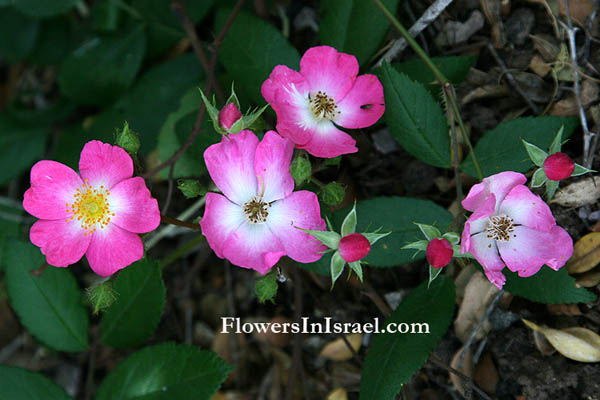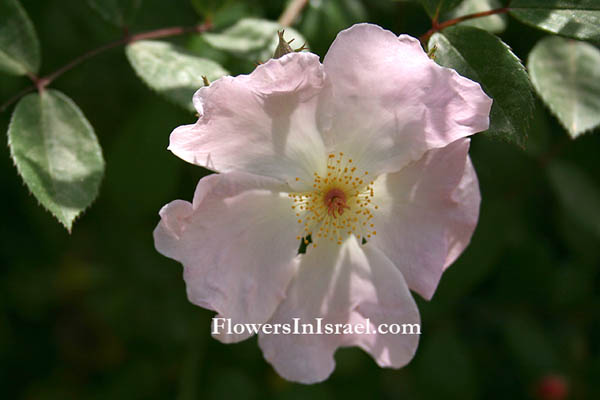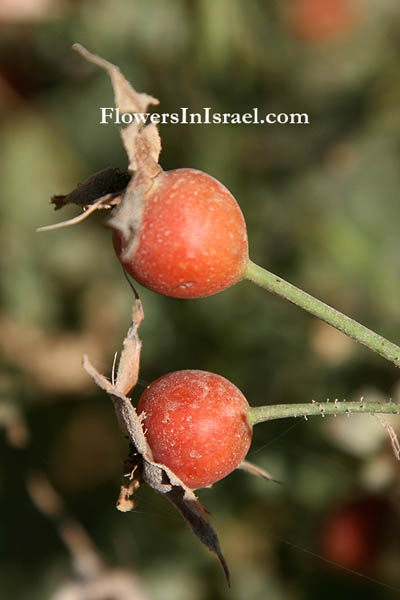Hebrew: ורד הכלב, Arabic: (warada jawri bry), نسرين (nisrin)
| Scientific name: | Rosa canina L. | |
| Common name: | Dog Rose, Wild Brier | |
| Hebrew name: | ורד הכלב | |
| Arabic name: | ورد جوري بري (warada jawri bry), نسرين (nisrin) | |
| Family: | Rosaceae, ורדיים |

|
| Life form: | phanerophyte, shrub | |
| Spinescence: | Emergences | |
| Leaves: | Alternate, compound, pinnate, dentate or serrate | |
| Flowers: | White or pink, 5-petalled flowers, 4-6 cm across and in clusters of 1-5 | |
| Flowering Period: | May, June, July, August | |
| Habitat: | Mediterranean maquis and forest | |
| Distribution: | The Mediterranean Woodlands and Shrublands, Montane vegetation of Mt. Hermon | |
| Chorotype: | Euro-Siberian - Med - Irano-Turanian | |
| Summer shedding: | Perennating |

Derivation of the botanical name: Rosa, an ancient Latin name whose meaning has been lost. canina, of or pertaining to a dog; canine; of dogs. Linnaeus (1707–1778), named this plant Rosa canina in 1753. The Hebrew word Vered, וֶרֶד, Greek: rodon; Aramaic: Varda; Arabic: warad, ورد . The Hebrew word hakelev, הכלב, a tranlation from the scientific name canina, dog.
The hips of the Dog Rose are an excellent source of readily absorbed vitamins. Very rich in vitamin C, among the richest sources of any plant and were collected to make rose-hip syrup during World War II. The ancient Romans used Rosa canina for the bites of rabid dogs, and in the first century CE., Pliny, recorded 32 different disorders that responded well to Rose preparations and the first treatment of rabies: "A Roman woman dreamed she was to send the roots of the rose to her son serving in the Roman army in Spain. Just before the package arrived, the soldier was bitten by a mad dog and contacted rabies, and a tea of the roots cured the disease." 
|